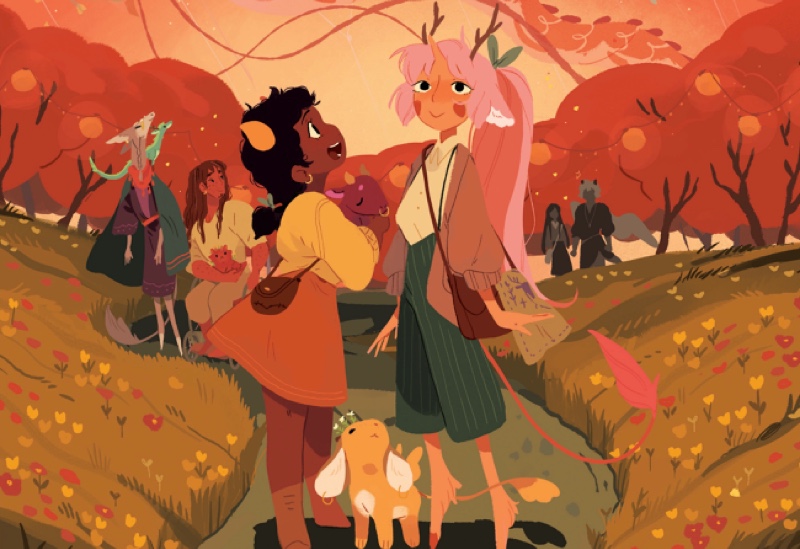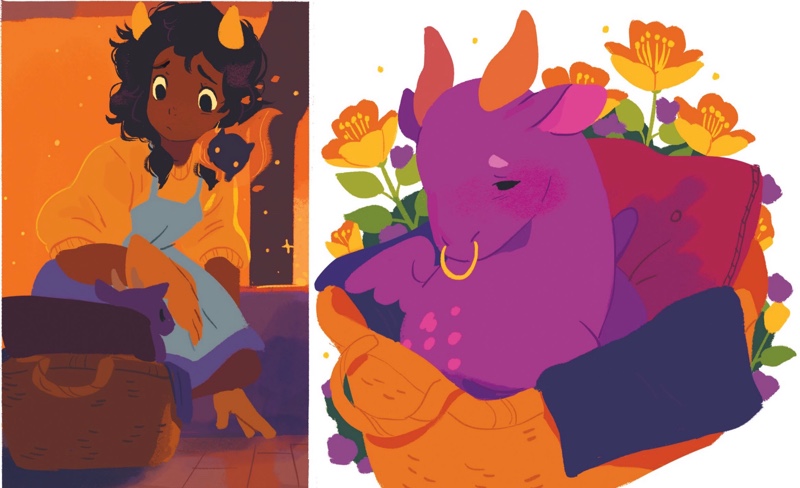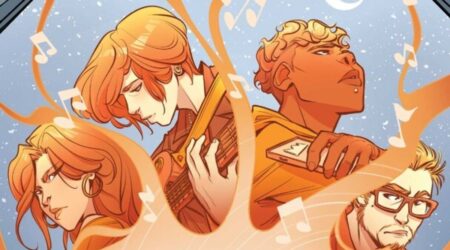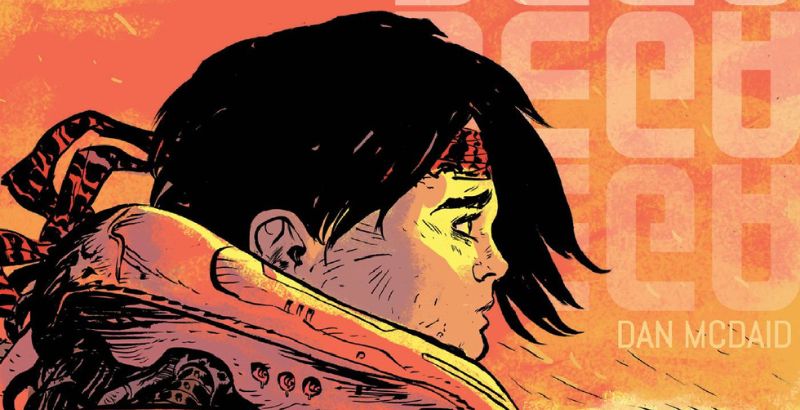
The Tea Dragon Tapestry is published by Oni Press, with writing and art by Katie O’Neil and letters by Crank!. In a sleepy little village, working hard by her forge is the young blacksmith Greta. While her smithing is going well, she struggles to help her tea dragon, Ginseng. Ginseng’s troubles aren’t the only ones going around, however, as several of the villagers face the struggles that life sometimes presents us. But, with a bit of patience, understanding, and support from their friends, they should be able to see themselves through their troubles.
Lots of material aimed at kids is designed to address how we overcome adversity. All too often however these well-intentioned stories leave out a critical element to the process. That element is time. Frequently we see stories try to tie up problems in neat, quick little bows. As soon as a character discerns what the solution to their problem is, they can move on to the next step of life. This is rarely the case in real life, and the repeated push of this narrative can give a false impression of how life’s problems are dealt with. The Tea Dragon Tapestry does a wonderful job avoiding this common pitfall. This is highlighted best between Greta and her tea dragon Gingseng.
Ginseng was adopted by Greta when their old owner passed away. Throughout this story, Ginseng is still in mourning. Greta is understandably distressed by this and struggles with the fact that she cannot simply make Ginseng happy again. When every attempt fails, Greta must accept that she can only be there for when Ginseng is ready to smile again. This is hard for her, but she comes to understand that Ginseng’s happiness isn’t about her. Ginseng will be happy when the time is right. Until then she just needs to be there.

While Greta struggles to accept that there are things she cannot change, other residents of the village struggle with accepting the changes that have come without their wanting. This theme counterbalances the previous one, creating a sort of narrative symmetry. Seeing those who want change struggle to have it, while those who have had change wish things would stay as they were. Seeing all of them come to grow past these limitations delivers a nice message. Though the delivery isn’t without its faults.
There are moments in The Tea Dragon Tapestry where I got a little confused with what was being shown to me. This was never so bad that I couldn’t figure it out, but there were a couple of times where I had to stop and go over a page’s images a few more times to puzzle it out.
The other thing one should be aware of when checking out The Tea Dragon Tapestry is that it assumes you have read the previous books. While this isn’t a bad thing per se, if you don’t like feeling lost where characters and backstory are concerned, I’d have to recommend checking out the previous books first.
The art in The Tea Dragon Tapestry is pleasant and warm. The story is fairly laid back, and the visual presentation follows suit. The bright colors and simple 2D designs have an almost relaxing quality to them. The entire village is imbued with an air of relaxation and feels like the reader is encouraged to take their time with this story, to slowly turn each page and let the warmth of its art wash over them.
Despite a few stumbles here and there, I think that The Tea Dragon Tapestry is a lovely, relaxing graphic novel. It has a beautiful message about dealing with the struggles life sends our way and how patience is important in overcoming them. A lovely book for a young reader with worthwhile messages is something that is always a good thing.
The Tea Dragon Tapestry is available on Sept 2nd.
The Tea Dragon Tapestry
TL;DR
Despite a few stumbles here and there, I think that The Tea Dragon Tapestry is a lovely, relaxing graphic novel. It has a beautiful message about dealing with the struggles life sends our way and how patience is important in overcoming them. A lovely book for a young reader with worthwhile messages is something that is always a good thing.






